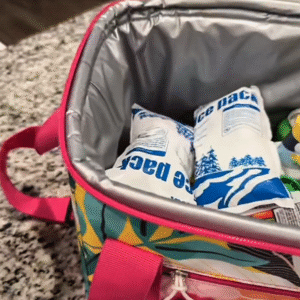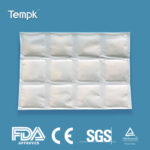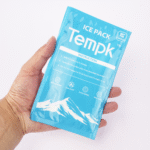How to Pack a Dry Ice Pack Sheet Lunch Box Safely
If you need food to stay cold for hours, a dry ice pack sheet lunch box can deliver consistent chill when used correctly. In this 2025 guide, you’ll learn safe packing steps, hold‑time math, and airline rules so your dry ice pack sheet lunch box keeps meals out of the danger zone and avoids CO₂ build‑up risks. We’ll compare options, share real‑world tips, and give you simple, actionable checklists.
-
How does a dry ice pack sheet lunch box work? Understanding venting, insulation, and cold sources to protect perishables.
-
How long will it stay cold? Hold‑time rules of thumb and an easy sizing method for daily commutes and flights.
-
Is it safe for kids, offices, and air travel? Gloves, ventilation, and the 2.5 kg airline limit explained.
-
When to choose pack sheets vs gel packs or PCM panels? Trade‑offs by temperature, weight, and cost.
-
What’s new in 2025? Materials, regulations, and sustainability shifts you should know.
What is a dry ice pack sheet lunch box, and when should you use it?
A dry ice pack sheet lunch box is an insulated container paired with a dry, flexible “pack sheet” cold source to keep food below 40°F (4°C) for hours. Pack sheets are thin grids that freeze flat, saving space, while a vented setup prevents pressure build‑up if you use true dry ice (solid CO₂). Use this when you need stronger cooling than frozen water bottles or when space is tight. Keeping foods under 40°F helps prevent rapid bacterial growth. FoodSafety.gov+1
When it’s ideal: hot commutes, long desk days, sports sidelines, field tech routes, and trips where fridge access is uncertain. If you’re flying, passenger rules cap dry ice to 2.5 kg (5.5 lb) per traveler and require vented packaging—details below. Federal Aviation Administration
Pack sheet vs. “true” dry ice: what’s the difference?
Pack sheets are water‑ or PCM‑based pads you hydrate and freeze; they don’t sublimate. True dry ice is solid carbon dioxide at −78.5°C (−109.3°F) that turns directly into gas. If you choose true dry ice inside a dry ice pack sheet lunch box, the container must release CO₂ to prevent pressure build‑up. That’s non‑negotiable for safety. USGS+1
| Cooling Option | Typical Temp Range | Reusable Cycles | What it Means for You |
|---|---|---|---|
| Pack sheet (water) | ~32°F/0°C target | 100–300+ | Gentle, food‑safe chill for sandwiches and dairy. |
| Pack sheet (PCM 5–10°C) | 41–50°F control | 200–500+ | Keeps produce cool without freezing texture. |
| True dry ice (CO₂) | −78.5°C source | Single use | Very cold, must be vented; fast chill for frozen foods. USGS |
Practical tips you can use today
-
For everyday meals: start with pack sheets that freeze at 32°F; they’re safer and simpler than true dry ice for kids.
-
For frozen desserts: add a small true dry ice block above the pack sheet—never seal the lunch box airtight. PHMSA
-
For delicate produce: use a PCM sheet targeting ~46°F to avoid freezing lettuce and berries.
Real case: A service engineer packed yogurt, fruit, and a protein bowl for a 7‑hour summer shift. One PCM sheet (≈46°F) plus a 32°F pack sheet kept the load under 40°F in a mid‑grade insulated dry ice pack sheet lunch box. No leaks, no soggy produce, and no trips to a fridge.
How do you pack a dry ice pack sheet lunch box step by step?
Here’s the fast, safe method to pack your dry ice pack sheet lunch box for consistent cold. The goal is sub‑40°F (4°C) internal temperature, vented if using true dry ice. Keep food in rigid containers; prevent direct contact between true dry ice and skin, plastics, or cans.
-
Pre‑chill the box. Place it open in a cool room 10–15 minutes.
-
Condition the pack sheet. Hydrate (if applicable) and freeze flat overnight.
-
Add a barrier layer. A thin towel or insert tray avoids wet lids and frostbite cold spots.
-
Load food compactly. Cold air space is wasted space; fill gaps with fruit or napkins.
-
Top with the pack sheet. Cold air sinks; placing cold source on top evens the gradient.
-
If using true dry ice: use a vented container and label it “Dry ice / UN1845.” Keep the block wrapped in paper to slow burn‑off. PHMSA+1
-
Close loosely at first. Let pressure equalize, then latch.
-
Track time. Aim to consume perishable foods within 2 hours at ambient or keep below 40°F. FoodSafety.gov+1
Sizing your dry ice pack sheet lunch box the simple way
Quick rule of thumb:
-
Moderate insulation (typical lunch box), indoor day: start with 1 standard pack sheet per 3–4 lb of food.
-
Outdoor heat or long commutes: 2 sheets, or 1 sheet + small true dry ice block with venting.
-
Flights: true dry ice is limited to 2.5 kg per person; weigh and label if you choose it. Federal Aviation Administration
Why it works: Pack sheets buffer the initial melt load; true dry ice provides a deeper reservoir. True dry ice sublimates at −78.5°C, which is why it chills fast—but that gas must escape. USGS
How long does a dry ice pack sheet lunch box stay cold?
Most everyday setups hold safe temps 4–8 hours indoors with a pack sheet; add true dry ice and you extend cold time or carry frozen items. The exact time depends on insulation quality, air gaps, door openings, and outside heat. To minimize risk, keep foods out of the 40–140°F danger zone, and use two cold sources when in doubt. Food Safety and Inspection Service+1
Planning tips that stretch your cold time:
-
Freeze water‑rich items (grapes, juice box) to act as extra cold mass.
-
Keep the box closed; each peek can raise internal temps 5–10°F in thin bags.
-
Use rigid containers; less headspace means fewer warm pockets.
Estimating cold time with a quick checklist
-
Scenario A (office, AC, 6 hours): 1–2 pack sheets, no true dry ice.
-
Scenario B (field work, 8 hours, hot car): 2 pack sheets + small true dry ice block in a vented dry ice pack sheet lunch box. PHMSA
-
Scenario C (flight day, frozen pastry drop): small pellets of true dry ice, max 2.5 kg per traveler, properly marked and vented. Federal Aviation Administration
Is a dry ice pack sheet lunch box safe for kids and air travel?
Yes—when you match the cold source to the user and follow basic rules. For children and classrooms, stick to pack sheets or PCM sheets; teach “don’t touch the cold plate” and “close it after use.” For flights, understand the 2.5 kg (5.5 lb) dry ice cap, vented container requirement, and labeling. Airlines and TSA/FAA enforce these consistently. Federal Aviation Administration+1
Core safety rules every parent and traveler should know:
-
Never seal true dry ice in an airtight lunch box; pressure can build as CO₂ gas forms. PHMSA
-
Handle with gloves to avoid frostbite‑like contact burns.
-
Mind the air. High CO₂ can displace oxygen in tight spaces; workplace and exposure limits exist for a reason. OSHA
-
Label and weigh when traveling by air; mark “Dry ice / UN1845” and show ≤2.5 kg if applicable. eCFR
Airline snapshot: what the rules say
-
FAA/TSA: up to 2.5 kg (5.5 lb) per passenger in carry‑on or checked, vented packaging, marked “Dry ice” with net mass or “≤2.5 kg.” Airline approval required. Federal Aviation Administration+1
-
IATA DGR addendum (2025): operators may limit acceptance; net weight of dry ice must be declared to assess aircraft limits. IATA
-
Cargo guidance: for shipping, follow IATA PI 954 and acceptance checks; marking UN1845 and net mass is mandatory. IATA
Dry ice pack sheet lunch box vs. gel packs vs. PCM panels: which fits you?
If you want a set‑and‑forget daily routine, a dry ice pack sheet lunch box with 32°F pack sheets is the sweet spot. You’ll get predictable cooling without flight paperwork or gloves. For frozen treats or long outdoor days, add a small true dry ice piece, but keep the container vented and practice safe handling. eCFR
Choose by temperature target and user profile
-
Kids & schools: pack sheets or 41–46°F PCM sheets; no true dry ice.
-
Commuters: pack sheets most days; true dry ice only for frozen items.
-
Field technicians: hybrid (pack sheet + small true dry ice) for 8–10 hours.
-
Frequent flyers: prefer pack sheets; if using dry ice, follow 2.5 kg cap and labeling. Federal Aviation Administration
| Use Case | Best Choice | Why It Works | What to Watch |
|---|---|---|---|
| Deli lunch, fruit | Pack sheet (32°F) | Simple, reusable, no venting | Re‑freeze nightly |
| Frozen dessert drop | Pack sheet + small dry ice | Keeps items frozen longer | Venting + gloves OSHA |
| Produce snack box | PCM sheet (46°F) | Prevents freezing delicate items | Higher purchase cost |
| Flight with samples | Vented true dry ice (≤2.5 kg) | Deep cold; compliant when labeled | Airline approval, markings Federal Aviation Administration |
Interactive: Your 2‑Minute “Chill Plan” for a dry ice pack sheet lunch box
Federal Aviation Administration+1
The science behind the chill (made simple)
True dry ice is −78.5°C and sublimates to gas; that’s why it cools quickly without puddles. The trade‑off is safety and venting. Pack sheets, by contrast, release cold as they melt or shift phase around their set point. If you see fog, it’s CO₂ gas mixing with humid air—not smoke. USGS
Food safety anchor: keep perishable foods below 40°F and out of the 40–140°F range where germs multiply. For events or long commutes, use two cold sources when you can. FoodSafety.gov+1
2025 materials, regulations, and sustainability trends for dry ice pack sheet lunch box solutions
Trend overview: In 2025, we see broader airline clarity on 2.5 kg dry ice limits for passengers, plus operator‑specific acceptance checks. For shippers, IATA’s PI 954 documentation and acceptance forms remain central, with updates and airline variations outlined in current addenda. On materials, reusable pack sheets and PCM panels keep gaining share as consumers seek waste‑reduced cooling without handling CO₂. Federal Aviation Administration+2IATA+2
What’s new and why it matters
-
Clearer airline pages & TSA reminders make it easier to travel with perishables under the 2.5 kg rule. Helpful for holiday and summer peaks. Federal Aviation Administration+1
-
Operator variations highlight the need to declare dry ice net weight during booking—a change that reduces last‑minute surprises at check‑in. IATA
-
Home and school guidance continues to emphasize sub‑40°F storage and two cold sources for lunches—simple, effective, and kid‑friendly. FoodSafety.gov
Market insight: Consumer content and federal pages reinforce the “keep it below 40°F” message, while pack sheet makers optimize reusability and thinner grids for faster freeze and better surface contact. For travel, many brands are printing UN1845 and net weight fields directly on labels to help flyers comply. FoodSafety.gov
Frequently Asked Questions
Q1: Is a dry ice pack sheet lunch box safe for school?
Yes—use pack sheets or mild PCM sheets, not true dry ice. Keep the box closed except when eating, and ensure foods stay below 40°F for safety. FoodSafety.gov
Q2: Can I fly with a dry ice pack sheet lunch box?
Yes. Pack sheets are fine. For true dry ice, cap at 2.5 kg, use a vented container, and label “Dry ice / UN1845” with net mass. Airline approval is required. Federal Aviation Administration+1
Q3: How many pack sheets do I need?
Most lunches are covered by one sheet for 4–6 hours indoors. Add a second sheet or a small true dry ice block for heat, long days, or frozen items. FoodSafety.gov
Q4: Will true dry ice make food unsafe to eat?
No—CO₂ isn’t a contaminant at typical exposure, but avoid direct contact with food to prevent extreme freezing and texture damage; always vent the container. OSHA
Q5: What temperatures should I target?
Keep cold foods at or below 40°F (4°C); that’s the common consumer benchmark. Retail codes often cite 41°F (5°C) thresholds, but your goal is safely below that. FoodSafety.gov+1
Q6: Do I need to mark the lunch box if I use true dry ice?
For air travel and shipping, yes—mark UN1845 and the net mass; packaging must allow gas release. At home or work, still use a vent path and keep away from children. PHMSA
Summary and recommendations
Key takeaways: A dry ice pack sheet lunch box offers compact, reliable cooling for daily use. Choose pack sheets for simplicity; add true dry ice only when you need deep cold and can vent the container. Keep food below 40°F, minimize air gaps, and follow the 2.5 kg dry ice limit and labeling when you fly. FoodSafety.gov+1
Next steps:
-
Pick your cold source (pack sheet for daily; hybrid for long hot days).
-
Follow the step‑by‑step pack‑out and the 2‑minute Chill Plan.
-
For flights, confirm airline approval, venting, and labels.
Ready to optimize? Map your weekly routes and pack sheet count today, then practice one timed “test pack” this week to lock your routine.
About Tempk
We build cold‑chain tools and content that turn complex guidance into practical steps. Our team blends packaging engineering and field operations experience to help you choose the right pack sheet, size dry ice safely, and pass airline checks with confidence. We focus on verified rules, clear how‑tos, and reusable solutions that reduce waste.
Call to action: Talk to a Tempk specialist about right‑sizing your dry ice pack sheet lunch box for your commute or flight plan.
























